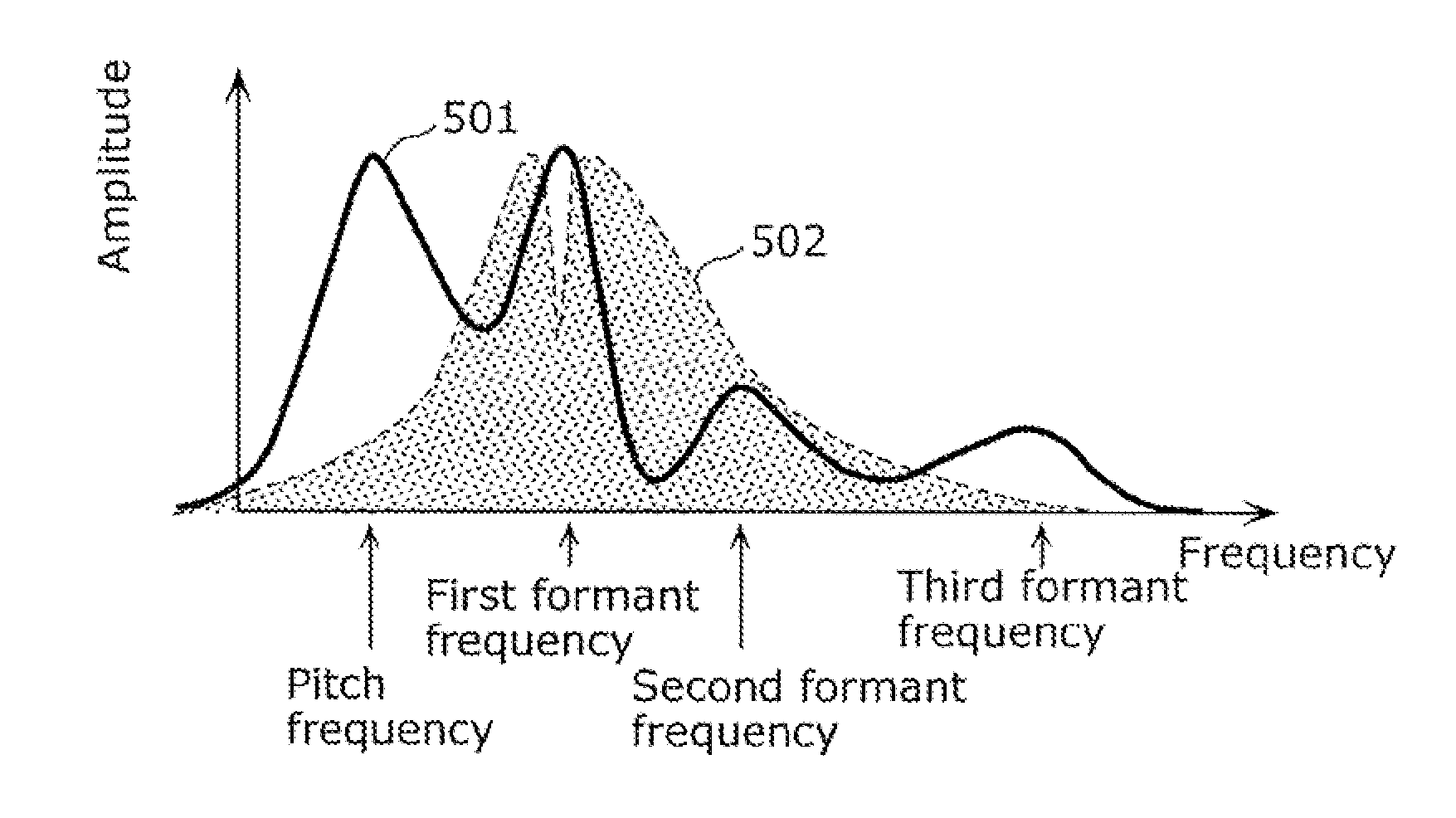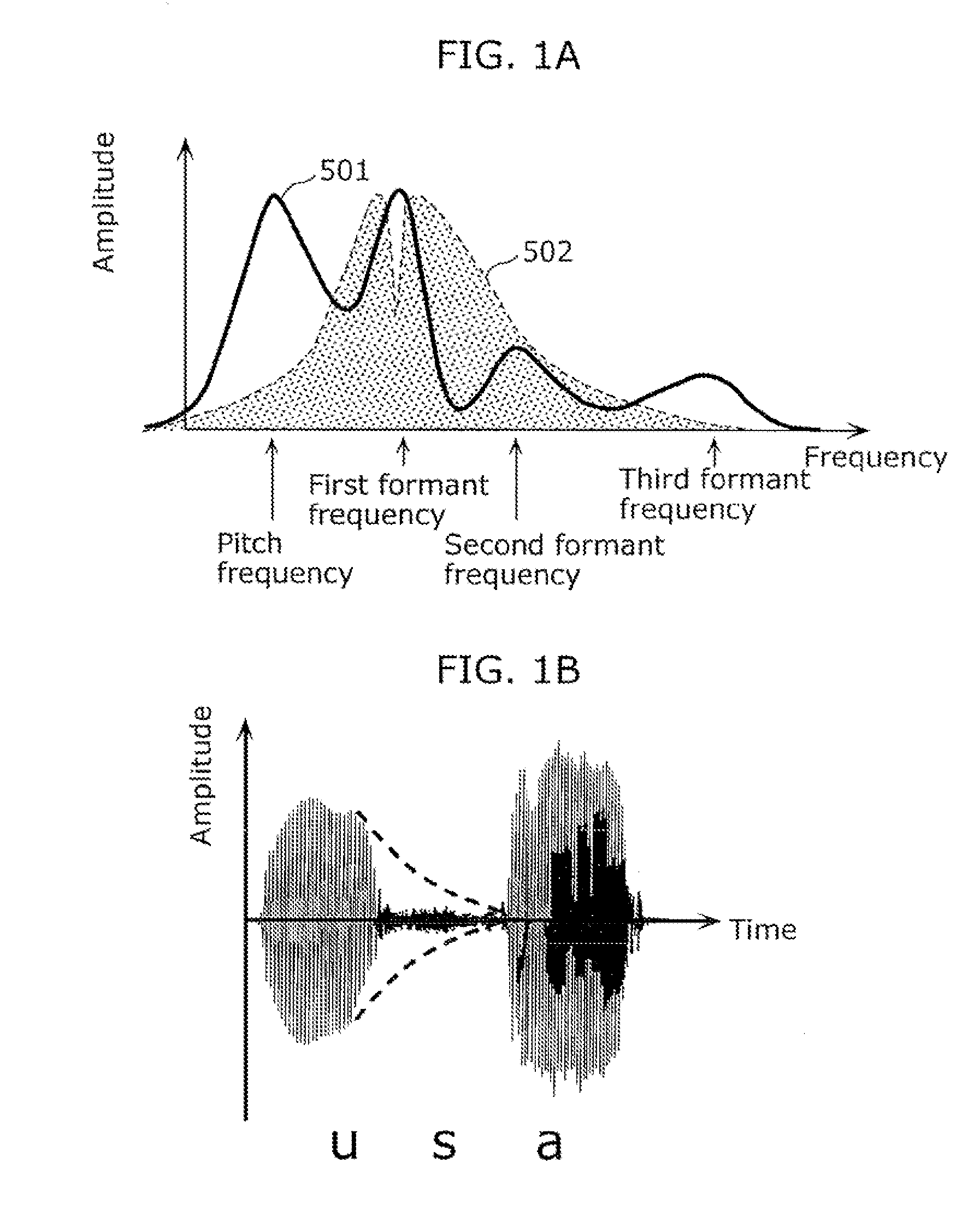System, method, program, and integrated circuit for hearing aid
a hearing aid and integrated circuit technology, applied in the field of hearing aid systems, can solve the problems of difficult to perceive the subsequent sound, difficult to perceive the close frequency sound, and difficult to perceive the soft sound as compared to a normal person, and achieve the effect of improving the clarity of speech
- Summary
- Abstract
- Description
- Claims
- Application Information
AI Technical Summary
Benefits of technology
Problems solved by technology
Method used
Image
Examples
embodiment 1
[0094]FIG. 8 is a diagram showing an external view of the hearing aid system in the first embodiment according to the present invention.
[0095]A hearing aid system 1000a includes: first and second hearing aid devices 100 and 110 which are to be fitted on the left and right ears, respectively; and a remote control 120. It should be noted that the hearing aid system 1000a corresponds to the hearing aid system 1000 shown in FIG. 7, and that the first and second hearing aid devices 100 and 110 correspond to the first and second hearing aid devices 1100 and 1200, respectively, shown in FIG. 7.
[0096]The first hearing aid device 100 is fitted on, for example, the left ear, and includes: a main unit which performs amplification to compensate hearing loss; a sound pickup unit 101 included in the main unit; an output unit 106; and a switch 109. The second hearing aid device 110 has the same configuration as the first hearing aid device 100, and is fitted on, for example, the right ear. More sp...
first modification
(First Modification)
[0160]Here, the first modification in the present embodiment is described. As compared to the first and second hearing aid devices 100 and 110 of the hearing aid system 1000a in the stated embodiment, the arrangement of hearing compensation units is different in first and second hearing aid devices of a hearing aid system in the present modification.
[0161]FIG. 17 is a functional block diagram of the hearing aid system in the present modification.
[0162]A hearing aid system 1000b in the present modification includes: first and second hearing aid devices 100a and 110b; and a remote control 120.
[0163]The first and second hearing aid devices 100a and 110b in the present modification include the same components as the first and second hearing aid devices 100 and 110 in the above embodiment, respectively. However, the hearing compensation units 105 and 115 are arranged before the division units 102 and 112, respectively. To be more specific, each of the hearing compensa...
second modification
(Second Modification)
[0165]Here, the second modification in the present embodiment is described. As compared to the hearing aid system 1000a in the above embodiment, a division unit has a different configuration in a hearing aid system of the present modification.
[0166]FIG. 18 is a diagram showing a configuration and connection relation of the division unit included in the hearing system in the present modification.
[0167]As shown in FIG. 18, a division unit 102a in the present modification includes an all-pass filter (APF) 901, a BPF 902, and a subtraction unit 903. The APF 901 receives an acoustic signal outputted from the sound pickup unit 101, and outputs signals in all frequency bands (i.e., signal in an entire band) included in the acoustic signal. The BPF 902 is a filter for extracting a signal including main speech components (i.e., the signal in the voice band), and has the same characteristics as the BPF 202 shown in FIG. 10 in the stated embodiment. More specifically, the ...
PUM
 Login to View More
Login to View More Abstract
Description
Claims
Application Information
 Login to View More
Login to View More - R&D
- Intellectual Property
- Life Sciences
- Materials
- Tech Scout
- Unparalleled Data Quality
- Higher Quality Content
- 60% Fewer Hallucinations
Browse by: Latest US Patents, China's latest patents, Technical Efficacy Thesaurus, Application Domain, Technology Topic, Popular Technical Reports.
© 2025 PatSnap. All rights reserved.Legal|Privacy policy|Modern Slavery Act Transparency Statement|Sitemap|About US| Contact US: help@patsnap.com



